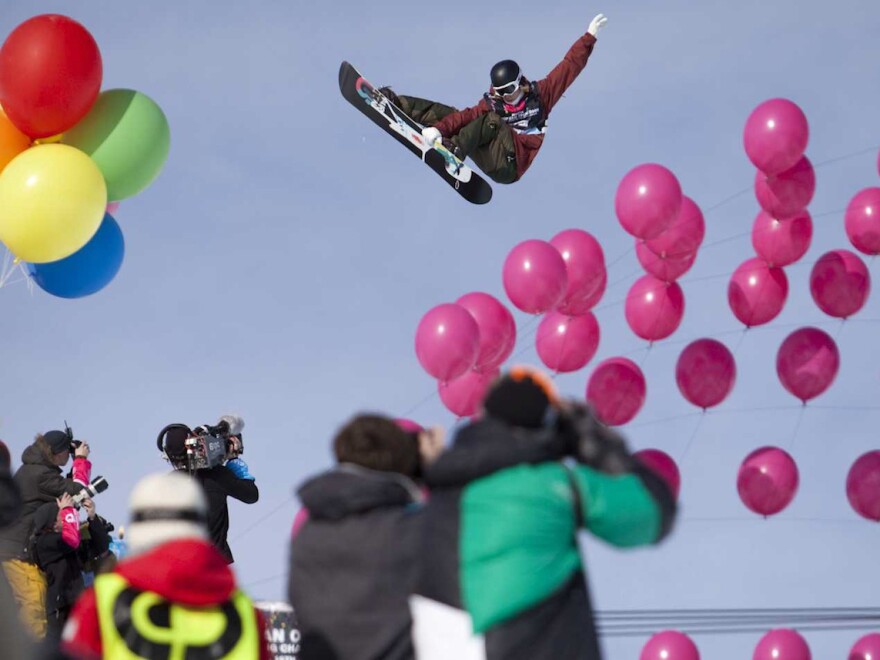"You need to be prepared for the Kevin who comes back not to be the same Kevin."
That's what a doctor told the parents of snowboarder Kevin Pearce following the brain injury he suffered in late 2009, while training for the Vancouver Olympics.
Those words, simple but painful for a parent to hear, are essentially what Lucy Walker's moving documentary, The Crash Reel, is about: the way traumatic brain injuries — wounds that, after recovery, can seemingly be invisible — leave their victims no choice but to be different people.
Walker wastes no time getting to the moment that would change Pearce's life. The film opens with a fast-paced training-and-partying montage, suggesting the sort of high-energy extreme-sports documentary one would normally see playing in a ski-resort bar. That's until the moment, which arrives without warning, when Pearce comes back down into the half-pipe after a high-flying acrobatic trick, catching the edge of his board on the half-pipe wall. In an instant, he's slammed face-first into the hard-packed ice and snow.
Because of the nature of the sport that Pearce is involved in, where riders routinely wear cameras to capture their own feats and those of their friends, there's no shortage of footage from the moments before and after the accident, as a bloody, unconscious Pearce is airlifted off the mountain and his friends sit in shock at what they've just witnessed.
The accident has very different implications for Pearce on the one hand and his family on the other. Walker structures the movie to give voice to both perspectives, which will eventually come into conflict and provide narrative push and pull for the film.
With Pearce, she needs to demonstrate just why it is that, after his initial recovery, he's so determined to get back on a snowboard despite his ongoing issues with coordination and eyesight. So after the initial look at the crash, Walker rewinds for a quick home-movie overview of his early life in Vermont --scenes of him acting like a daredevil, even as a toddler, lead into skateboarding, surfing and eventually snowboarding.

That sequence segues to a stretch chronicling his development into a world-class boarder, one of the few to ever really challenge the supremacy of Shaun White — the sport's intimidating Michael Jordan, Tiger Woods and Muhammad Ali all rolled into one. The obvious joy Pearce feels not just in his competitive success, but also in the simple freeing act of flying down a mountain and into the air strapped to a board, is conveyed so effectively that it's hard not to root for him to be able to get back on it.
But Walker has also shown us the intense emotional pain experienced by his family as they sit at his bedside while he's comatose, as they help him through long hours, weeks, months and eventually years of rehabilitation. Pearce isn't always easy to deal with during that time, either: Because of the injury, he suffers from depression, irritability, irrationality and memory loss.
The personal story here is told so sensitively and intimately told, with difficult moments between Pearce and his family and his doctors shown with an often uncomfortable honesty, that it's easy to forget that The Crash Reel is also a big-picture documentary about the larger issue of these kinds of injuries in sports.
Walker subtly sneaks in the stories of other athletes who've suffered similar (and often worse) fates than Pearce, and examines the reasons why such incidents are on the rise. She doesn't shy away from noting our own complicity — we, the spectators wanting ever greater thrills — in these injuries.
Few documentaries manage to show character arcs as full as the one Walker captures here. The Kevin of the end of the film is definitely not the same one he was before the accident, but neither is he the same man he was immediately after it, or a year after it.
Gaining the humility to accept limitations is no easy task for anyone, but it must be especially so for an athlete of Pearce's talents. Watching him do so demonstrates that his talents run far richer and deeper than those it takes to do a double cork in a half-pipe. (Recommended)
Copyright 2022 NPR. To see more, visit https://www.npr.org.





